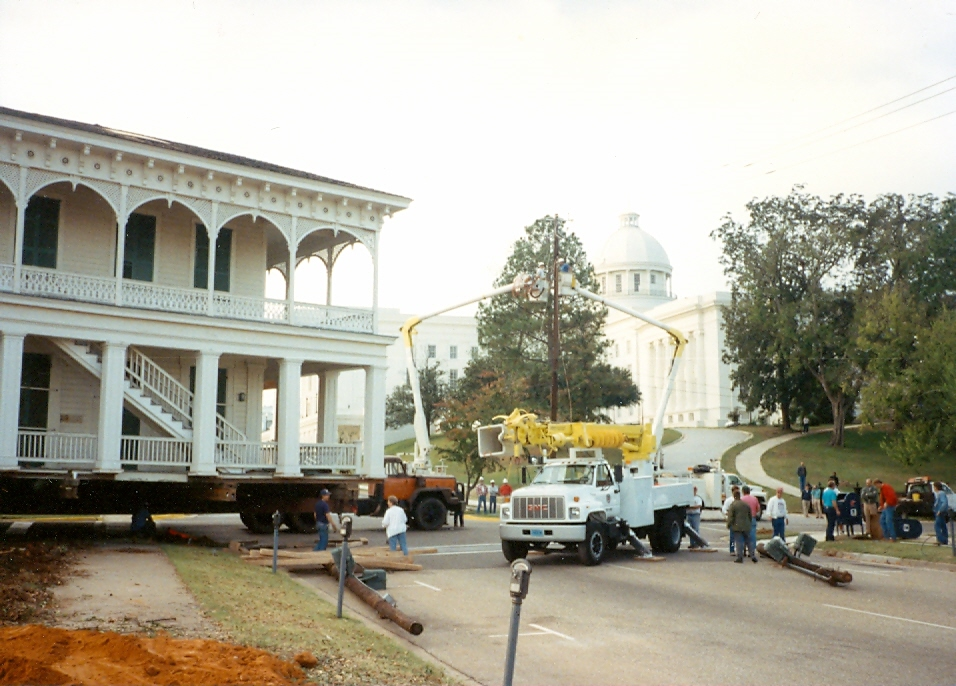To assuage the Acting State Finance Director, Jimmy Rowell, Bronner agreed to build a stand-alone multistory parking deck just behind the Lurleen Wallace State Office Building and near the State Capitol. In turn the Finance Director agreed that the State would vacate its gravel parking lots on the block which was to comprise the site of the RSA Union office structure and related parking deck. This order also cleared the way for removal of the historic Rice-Semple House[1] which was located in that same city block. At the time the Rice-Semple House was the home of the Lurleen Wallace Memorial Museum, and was hallowed ground. All of us were fearful of the fury we might encounter from the relocation of the historic old house. Besides the little ‘ol lady contingent, we expected to face the Wallace family, the Historical Society, the Landmarks Foundation, the Daughters of the Confederacy, and the Alabama Historical Commission. To my relief, Bronner assigned the relocation task to the Watson firm because he assumed it was situated more under their parking deck than it was under my future office building (thank the Lord!).
The moving of the old house encountered so many setbacks and plot twists that we referred to it as the “tar baby”. The poor old thing now resides in the 400 block of South Court, hardly a shadow of its former splendor, but it does serve as a secondary office of the Alabama Historical Commission. At one point, the removal of the structure had been delayed so long that it was blocking the progress of the $35 Million project planned for the site. In our biweekly coordination meeting, Bronner hammered so hard on Mike Watson to proceed with the removal task that we (almost) felt sorry for him. Week after week, Watson would whine that no one would accept the building, and that he had no available empty lot on which to move the huge old house. Finally, in a moment of impatience, Bronner ordered that the old thing be surreptitiously hauled five blocks down Monroe and temporarily stored on a vacant lot already cleared to make way for the lower Monroe Street development. I recall the sad old house sat there jacked up on steel beams for six months before new owners were found to accept it.
[1] To celebrate the 1976 Bicennial, the Montgomery AIA Chapter selected the ten most outstanding historic buildings in Montgomery. The Rice-Semple-Haardt House , built 1850, was fourth on the list. The building was on the National List of Historic Buildings.
- The Relocation of the Sacred Landmark Received Much Negative Press For Over a Year, as the Press Moguls Strove to Make Dr. Bronner Look Bad.
- The House is on Rollers, Crossing Union Street, Moving Down Monroe Street, in the Shadow of the State Capitol.
-Charles Humphries (“Peril and Intrigue Within Architecture”)
This is one of many RSA Union stories. The rest can be found here.


